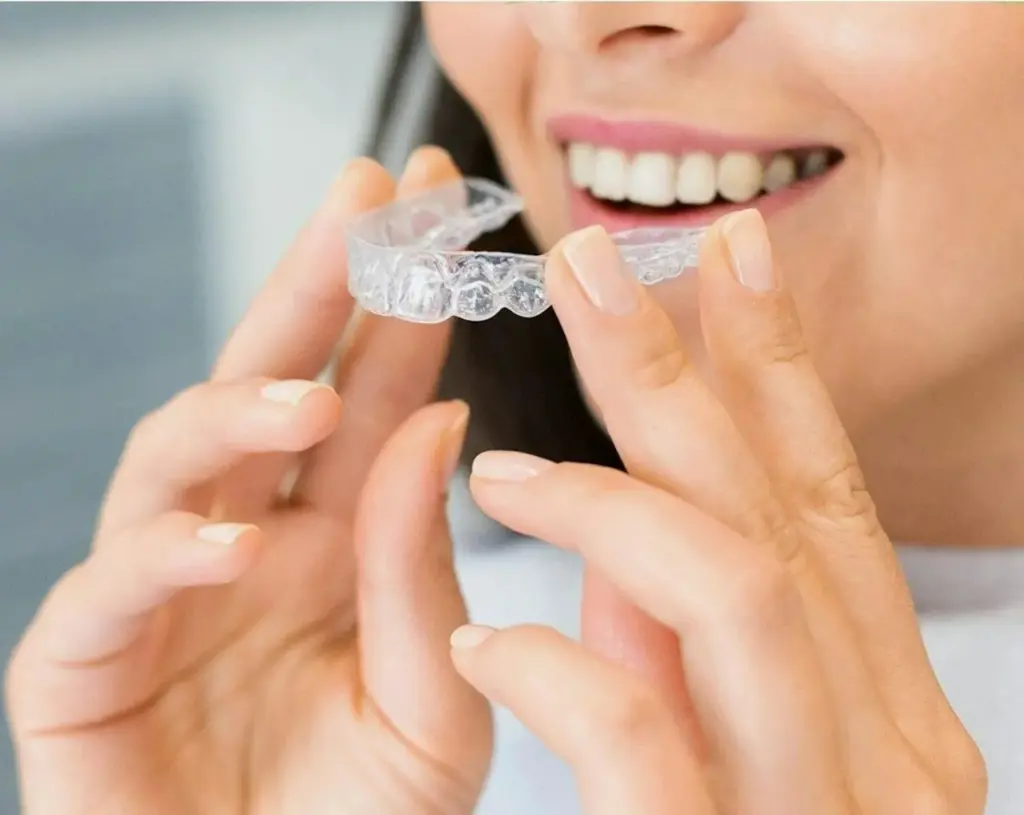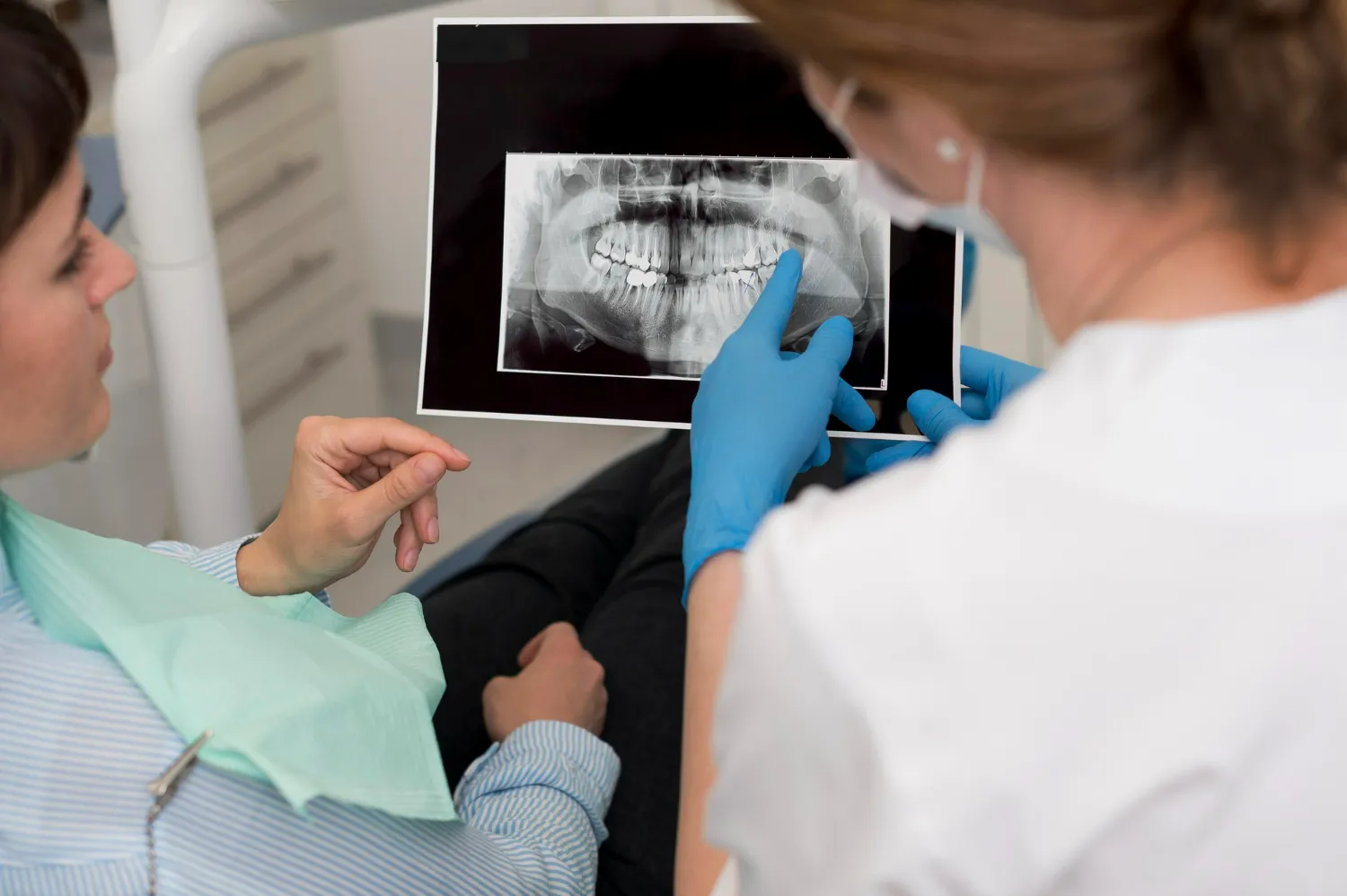If you’ve completed orthodontic treatment, you know the importance of maintaining your new smile. You may still wonder, can retainers move teeth back into place after some unexpected shifting?
This comprehensive guide explains how retainers work, their limitations, and when to seek professional advice so you can preserve your results long-term.

What Do Retainers Do, and How Do They Work?
After braces or clear aligners, your teeth remain vulnerable to movement as the surrounding bone and soft tissues stabilise. Retainers are custom-made appliances designed to apply gentle, continuous pressure, holding teeth in their corrected positions and allowing bone to remodel around them.
At Birchgrove Dental, we offer three main retainer options, each tailored to different needs:
- Fixed Retainers: A thin wire bonded behind lower front teeth provides continuous support without patient effort. Ideal for front teeth most prone to shifting.
- Hawley Retainers: Durable acrylic plates with adjustable metal wires that our team can tweak during follow-up visits. Removable for easy cleaning and eating.
- Clear Thermoplastic Retainers: Discreet, snug-fitting plastic trays perfect for patients who prefer a nearly invisible option.
When Can Retainers Move Teeth Back After They’ve Shifted?
Retainers are primarily maintenance devices, but under certain conditions, they can help shift teeth back into place. Understanding these conditions helps set realistic expectations.
Effective Scenarios
- Short-Term Lapses
- If you miss wearing your retainer for a few days to weeks, minor tooth movement can occur.
- Resuming retainer wear often corrects these minor shifts within a few weeks.
- Example: Sarah noticed her lower front teeth feeling slightly crowded after a two-week break. Wearing her clear retainer nightly for three weeks restored her previous alignment.
- If you miss wearing your retainer for a few days to weeks, minor tooth movement can occur.
- Adjustable Hawley Retainers
- Hawley retainers feature a labial wire that an orthodontist can adjust.
- During a follow-up visit, the orthodontist can activate the wire to apply targeted pressure on teeth that have shifted.
- Ideal for minor rotations or tooth movements of 1–2 mm.
- Hawley retainers feature a labial wire that an orthodontist can adjust.
- Well-Fitting Clear Trays
- If your thermoplastic retainer still snaps in with slight pressure, it can exert enough force to guide teeth back.
- Consistent wear is crucial—aim for 22 hours per day initially before transitioning to night-time wear.
- If your thermoplastic retainer still snaps in with slight pressure, it can exert enough force to guide teeth back.
Limitations of Retainers
- Significant Relapse
- Teeth that have shifted substantially, particularly over months or years without retention, often require new orthodontic treatment.
- Options include braces (metal or ceramic) or clear aligners (e.g., Invisalign) for comprehensive correction.
- Teeth that have shifted substantially, particularly over months or years without retention, often require new orthodontic treatment.
- Poorly Fitting Appliances
- Retainers warp over time due to heat (dishwasher, hot water) or wear.
- A loose-fitting retainer cannot maintain or restore tooth position and may need replacement.
- Retainers warp over time due to heat (dishwasher, hot water) or wear.
- Lack of Compliance
- Removable retainers depend on patient discipline.
- Night-time wear indefinitely is often recommended; skipping wear undermines retention.
- Removable retainers depend on patient discipline.
Signs Your Teeth Are Shifting
Early detection lets retainers work most effectively. Look for:
- Difficulty Seating the Retainer: Tightness or incomplete insertion signals movement.
- Visual Changes: New gaps, crowding, or rotations.
- Bite Alterations: Uneven contact or discomfort when biting.
- Speech Changes: A new lisp or altered pronunciation often indicates front-tooth movement, as even subtle dental misalignments can affect how sounds are formed. Speech disorders related to dental issues are more common than many realise, particularly when front teeth begin to shift.
If you notice any of these, book a retainer check with Birchgrove Dental immediately.
What to Do If Your Retainer No Longer Fits
A misfitting retainer must not be forced. Pushing it in risks enamel damage and appliance breakage.
- Cease Use: Remove a tight retainer to prevent harm.
- Book a Review: Schedule an appointment at Birchgrove Dental. Our specialists will assess fit and alignment.
- Replace or Repair: We’ll decide if your retainer needs adjustment, repair, or a new fabrication.
- Consider Minor Realignment: For shifts beyond 2–3 mm, a brief course of clear aligners may precede retainer wear.
Can Retainers Move Teeth Back After Long-Term Non-Use?
Extended gaps without retention allow teeth to settle deeply in new positions, making movement harder.
- Bone Stabilisation: After 6–12 months off, the bone around the shifted teeth hardens, resisting retainer force.
- Habitual Pressures: Chewing, tongue posture, and muscle forces cumulatively guide teeth.
Strategy
- Immediate Resumption: If your old retainer still fits with mild pressure, wear it full-time for six weeks, then at night.
- Professional Intervention: If it won’t fit, Birchgrove Dental can create a fresh appliance or plan a short aligner series to regain position.
Retainers for Adults: What to Expect
Adult patients can see results, though more gradually, due to denser bone. Birchgrove Dental offers:
- Thermoplastic Comfort: Discreet evolving trays that fit adult lifestyles.
- Additional Support: If minor relapse exceeds 3 mm, our Invisalign® Express packages (5–10 trays) can realign teeth quickly before resuming retainer wear.

Why Do Teeth Continue to Shift Over Time?
Acknowledging natural factors helps in long-term planning:
- Ageing: Jaw growth and enamel wear subtly alter alignment.
- Bruxism and Habits: Grinding and tongue thrust contribute to destabilisation.
- Tooth Loss: Missing teeth enable neighbouring movement.
Preventing Future Shifts: Best Practices
- Strict Retainer Schedule: Full-time wear for 3–6 months, then nights indefinitely.
- Routine Check‑Ups: Biannual visits let us catch retainer wear or alignment issues early.
- Retainer Hygiene: Daily cleaning prevents bacterial build-up and preserves appliance integrity.
- Address Habits: We offer night guards for bruxism and refer for myofunctional therapy if needed.
Teeth don’t just shift from a lack of retention—oral muscle habits and tongue posture can also contribute over time. In some cases, additional therapies may be recommended to retrain these muscles and support long-term alignment. According to Healthline, this type of therapy focuses on correcting improper tongue placement, swallowing patterns, and other oral habits that may disrupt dental stability.
Final Thoughts
Can retainers move teeth back? Yes, for minor, early shifts when the appliance fits well. For significant relapse or ill-fitting retainers, professional intervention is essential. Birchgrove Dental’s orthodontic specialists are ready to assess your situation, adjust or replace your retainer, or recommend a brief alignment course.
Protect your investment in your smile, book your retainer review online or call our clinic today to ensure your teeth remain perfectly aligned for years to come.




